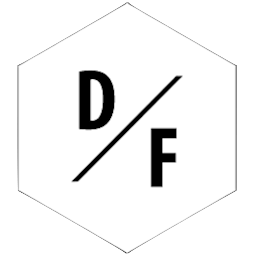The introduction of the Buy-Now-Pay-Later (BNPL) Act in New York marks a significant shift in how installment purchase services are regulated in one of the largest consumer markets in the United States. As BNPL options like Affirm, Klarna, and Afterpay continue to swell in popularity among consumers seeking flexible payment alternatives, New York’s legislative move in its 2025–2026 fiscal budget introduces a complex framework designed to supervise these burgeoning financial products. These changes come amid a wider national debate about consumer protection, the role of state regulators versus federal oversight, and equitable treatment of financial institutions.
Buy-Now-Pay-Later products, including offerings from major players such as Sezzle, Splitit, Clearpay, Laybuy, along with tradable methods like paysafecard, Zip, and PayPal Credit, have revolutionized retail financing. However, the regulatory vacuum has left unanswered questions about consumer rights, fees, and interest rates tied to these credit products. New York’s legislation aims to fill this gap with its comprehensive licensing regime and strict limits on fees and interest for BNPL lenders — actions that have garnered both praise and concern within the financial community.
Despite these reforms, the law’s exemption of national banks from licensing requirements introduces tension around the state’s regulation of its financial institutions. Critics argue this creates an uneven playing field that could fragment the lending landscape. Meanwhile, retail and finance sectors brace for the practical impact on compliance processes, consumer disclosures, and the profitability of BNPL services.
This article explores the intricacies of New York’s BNPL legislation, highlighting regulatory details, the broader implications for different bank charters, and what this means for consumers and providers navigating their BNPL options in 2025.
Defining Buy-Now-Pay-Later Loans Under New York Law
At the heart of New York’s Buy-Now-Pay-Later Act lies a broad definition that extends beyond typical “pay in 4” style installment plans popularized by providers like Affirm and Klarna. The legislation characterizes BNPL loans as any closed-end credit extended to consumers specifically tied to the purchase of goods or services. This framework aims to capture the majority of BNPL transactions but also sweeps in a wider array of credit activities that may not traditionally be considered under the BNPL banner.
Interestingly, the law carves out exceptions for motor vehicles and certain credit sales, recognizing the distinct regulatory environment in those sectors. However, for everyday consumer goods and services, the law’s extensive reach could impact a range of credit products offered by providers such as Afterpay, Clearpay, and Laybuy.
Key elements of New York’s BNPL loan definition include:
- Closed-end credit tied to a specific consumer purchase.
- Exclusions for particular categories, including motor vehicle sales.
- Inclusion of short-term installment plans that typically fall under “pay in 4” alternatives.
This broad definition means that financial entities offering installment payments through various platforms—including PayPal Credit and Sezzle—must assess whether their products fall under this statute. Many companies utilizing flexible payments that are not traditional credit cards could now be subject to more stringent state oversight, potentially altering business models that previously operated with less regulatory burden.
Financial institutions that have integrated BNPL features into their offerings, particularly through partnerships with providers like Zip or Splitit, will need to review program structures carefully to ensure compliance with New York’s detailed credit definitions. For consumers, this legal clarity may translate into better protection and more transparent practices but could also reduce the ease of access to certain installment plans.
| Aspect | Description | Examples Affected |
|---|---|---|
| Loan Type | Closed-end credit for specific purchases | Affirm “pay in 4”, Klarna Installments |
| Exemptions | Motor vehicles, certain credit sales excluded | Auto loans, specific retail credit sales |
| Scope | Includes many short-term financing options | Afterpay, Sezzle, Laybuy |
Licensing Requirements and the State vs. National Bank Divide
The BNPL Act introduces a new licensing requirement for all buy-now-pay-later lenders operating within New York. To legally offer BNPL loans, lenders must either obtain a license from the New York Department of Financial Services (NYDFS) or, if already authorized lenders under New York law, seek approval from the Department. This encompasses most fintech BNPL providers and smaller non-bank entities, positioning the NYDFS as a gatekeeper to this growing market.
However, a distinctive feature of the legislation is the explicit exemption of national banks, federal savings banks, federal credit unions, and other federally licensed institutions from these licensing mandates. This selective regulatory approach has triggered debate among industry stakeholders.
Implications of this exemption include:
- State-chartered banks, including New York’s own, must comply with the full licensing process.
- National banks face lighter regulatory burdens under this specific BNPL law, even if they offer similar products.
- This distinction could alter competitive dynamics between state and federally chartered banks.
Financial entities such as PayPal Credit and large banks affiliated with BNPL platforms might benefit from this national bank exemption, avoiding immediate licensing while continuing product offerings with established federal oversight. Meanwhile, state-chartered banks and many specialized BNPL firms must navigate a potentially cumbersome regulatory application and approval process that may include regular examinations and fee caps.
The effect of this bifurcated oversight is significant. It challenges the traditional principle of parity in bank regulation, historically meant to level the playing field regardless of charter type. Investors and compliance officers at New York chartered banks are now tasked with hurdles not shared by their national counterparts, potentially influencing strategic decisions around product offerings.
| Entity Type | Licensing Requirement | Regulatory Authority |
|---|---|---|
| National Banks, Federal Institutions | Exempt | Comptroller of the Currency |
| State-Chartered Banks & BNPL Lenders | Mandatory Licensing | NY Department of Financial Services |
Interest Rate Caps and Consumer Fee Protections in BNPL Agreements
The New York legislation imposes strict interest rate caps and fee limitations on BNPL providers, aligning these caps with the state’s existing maximum allowable interest limits for consumer loans. These regulations also empower the NYDFS Superintendent to define precise limits on origination fees, late fees, and other charges often associated with these services.
This move aligns with New York’s longstanding commitment to protect consumers from predatory lending practices. While BNPL services historically marketed themselves as interest-free or low-interest options, associated fees have sometimes led to higher effective borrowing costs, especially for consumers who miss payment deadlines.
Consumer protections now mandated under the BNPL Act include:
- Caps on interest rates not to exceed New York’s maximum consumer lending limits.
- Restrictions on origination, late payment, or other miscellaneous fees.
- Mandatory transparent disclosure of terms, fees, and consumer rights.
In practice, providers like Klarna or Clearpay will have to redesign fee structures for New York customers to comply. Failure to do so could trigger penalties, thereby impacting profit models heavily reliant on fees and generated interests.
It’s noteworthy that this state-level legislation counters recent federal regulatory developments. The Consumer Financial Protection Bureau (CFPB) rescinded its BNPL Interpretive Rule following legal challenges, which would have applied similar Regulation Z consumer protections to BNPL products. New York’s steps, therefore, represent a divergent but focused effort to safeguard consumers in the absence of federal mandates.
| Consumer Protection Mechanism | Description | Impact on BNPL Providers |
|---|---|---|
| Interest Rate Caps | Capped at state’s max limit for consumer loans | Limits profit from high-interest BNPL loans |
| Fee Limitations | Restrictions on origination and late fees | Requires revised fee structures |
| Disclosure Requirements | Clear terms and consumer rights disclosures | Increased compliance effort |
Regulatory Oversight and Enforcement Powers Granted to NYDFS
The Buy-Now-Pay-Later Act empowers the New York Department of Financial Services Superintendent with broad regulatory authority to oversee BNPL providers. This includes the power to conduct regular examinations, investigations, and to enforce penalties for violations of the Act.
These enforcement capabilities include:
- Authority to require documentation and perform audits on BNPL lenders’ compliance.
- Ability to impose fines and sanctions for failures to comply with disclosure, licensing, or fee caps.
- Mandates for retention of transaction records ensuring transparency and consumer protection.
This level of scrutiny represents an expansion of NYDFS’s regulatory reach to include the BNPL sector comprehensively. Financial institutions and BNPL fintech firms alike will need to implement detailed compliance programs to meet these new standards.
For example, companies like Sezzle and Laybuy, which have rapidly expanded through e-commerce partnerships, will face enhanced scrutiny in their operations in New York. This may affect their data handling, claims procedures, and overall business practices, ensuring greater accountability.
| Regulatory Power | Descriptions | Relevance to BNPL Entities |
|---|---|---|
| Examination Rights | On-site and off-site compliance checks | Ensures adherence to licensing and fee rules |
| Penalties and Fines | Monetary and operational sanctions | Deters violations and promotes consumer protection |
| Record Keeping | Mandatory retention of transaction and compliance data | Supports transparency and auditability |
The Wider Impact of New York’s BNPL Legislation on Consumers and Providers
New York’s BNPL Act is a pioneering legislative step that may set a precedent for other states considering how to regulate this rapidly growing sector. It embodies challenges and opportunities for consumers, financial institutions, retailers, and fintech firms.
For consumers, the enhanced consumer protections, transparency, and fee caps promise greater fairness in BNPL products from firms such as Affirm, Zip, and PayPal Credit. However, more onerous licensing and operational costs may reduce the availability of BNPL options in the short term or lead providers to exit New York’s market.
Retailers partnering with BNPL platforms will also feel the impact, necessitating partnerships with compliant providers and revising promotional materials to meet new disclosure standards.
Key takeaways on the broader impact include:
- Increased regulatory oversight may encourage safer, more transparent BNPL products.
- Some smaller fintech BNPL lenders could face exit pressures due to compliance costs.
- State versus national bank distinctions might disrupt traditional banking competition.
- Consumer access to flexible credit could shift, influencing spending habits.
- Other states may adopt similar measures, shaping the national regulatory landscape.
Notably, companies looking to enter or expand their BNPL offerings in New York should monitor these developments closely. They might consult resources like top trade finance providers to align their financing strategies with compliance demands.
| Stakeholder | Potential Impact | Strategic Considerations |
|---|---|---|
| Consumers | Better protections, potential reduced options | Evaluate BNPL terms more carefully |
| Fintech Lenders | Increased compliance costs, possible market exit | Investment in regulatory compliance essential |
| Retailers | Need for compliant BNPL partnerships | Adapt marketing and payment options |
| State vs National Banks | Competitive imbalance concerns | Re-examine product offerings and charter choices |

